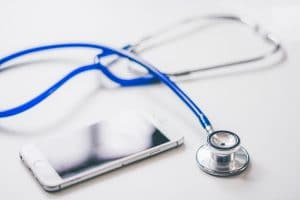How Connectivity, Data, and Rapid Diagnostics Are Improving Health Care
Society is more interconnected than ever these days. We are becoming accustomed to instant access to information, not to mention the ability to communicate in real time regardless of distance. Connectivity is no longer a luxury—it’s an expectation for most of us, almost a basic necessity.
The Benefits of Connectivity 
The digital revolution has changed the way we think. It’s difficult to imagine that sending messages once took days, weeks, or even months; today, a few simple keystrokes will ensure delivery of a message halfway around the world within a matter of seconds. Consumers now expect the products and services they use to be convenient and work flawlessly—and the devices we rely on every day are becoming smaller and less intrusive with each passing year. Seamless integration has been the driving force behind much of this.
Innovations in 5G technology will enhance the experience even further. Data speed will increase to the point where information will flow back and forth in close to real time. Those businesses that capitalize on the technology by promoting devices and platforms that are simple, intuitive and easy to access will be at the forefront of a brand new digital frontier.
Connectivity promises to deliver far-reaching benefits in the health care industry. It’s a key ingredient in the success of rapid lateral flow diagnostics—medical diagnostic tests that deliver lab-quality results to portable, affordable devices in minutes rather than hours. Test results and epidemiological data can be stored in a central, cloud-based reporting database to aid in tracking and contact tracing efforts, helping to keep communities safe and preventing economic collapse. The more data that is gathered, the better the odds of developing a successful vaccine, creating personalized treatment plans, implementing prevention strategies and coming up with predictive outbreak algorithms.
The immediate benefits of adding digital connectivity to tests are already impressive; instant feedback through mobile and web applications provides immediate, geo-mapped test results; epidemiological data such as age, gender, BMI, blood type and underlying health conditions; shareable data to aid in the efficient deployment of resources; and the ability to test, track and trace the spread of the virus in real time, allowing officials to warn people of possible exposure.
It’s clear we have only begun to scratch the surface regarding the positive impacts connectivity and data can have on lateral flow diagnostics. The future of health care looks promising thanks to innovations such as these.